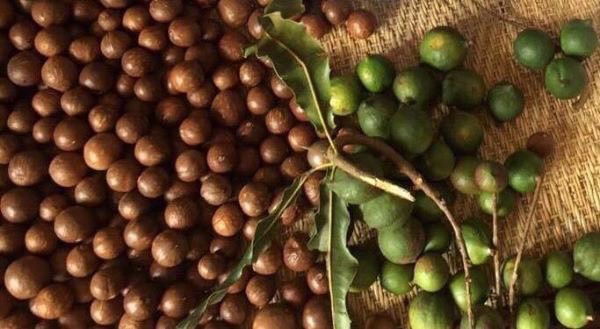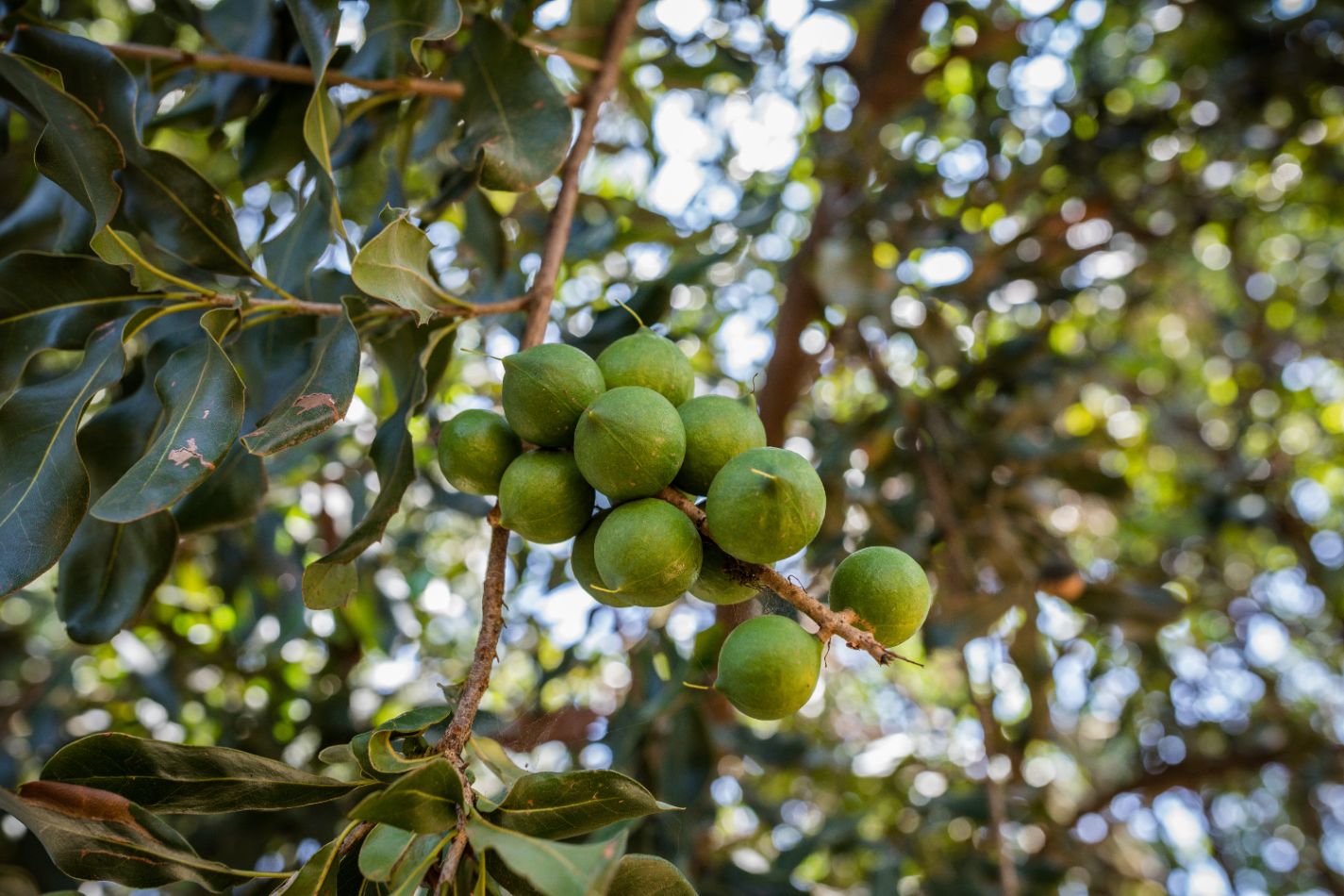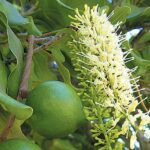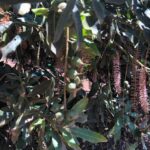夏威夷豆 / 杏 仁 / 腰 果 / 核 桃 / 胡 桃 / 南瓜子 / 巴西豆 / 開心果 / 榛 果 / 松 子 /
由於全球對環境問題日益關注,可持續農業實踐近年來變得極為重要。特別是夏威夷豆種植因為具有巨大的商機而受到關注。然而,了解教育可持續的夏威夷豆種植方法及其對環境的影響至關重要,以確保盈利能力和生態保護之間的平衡。在本文中,我們將探討可持續夏威夷豆種植的各個方面,包括最佳實踐方法、環境考慮因素以及教育在促進可持續產業方面的重要性。
教育可持續的夏威夷豆種植方法和環境影響
夏威夷豆種植是一個複雜的過程,需要專業的知識和技能。教育可持續的夏威夷豆種植方法在促進環境友好型方法的同時,維護生產力方面發揮著至關重要的作用。通過傳播知識和培訓人們可持續的技術,我們可以最大程度地減少傳統種植方法對環境的負面影響。以下是一些需要考慮的重點:
1. 瞭解可持續種植方法
教育可持續的夏威夷豆種植方法為農民提供了關於減少生態破壞的技術的重要知識。這些方法包括:
- 多元化的種植系統:在夏威夷豆樹旁種植多種作物有助於創建一個平衡的生態系統,減少害蟲侵害和土壤退化。
- 綜合病蟲害管理:採用綜合的病蟲害管理策略,如生物控制和天然農藥,減少對有害化學品的使用。
- 保護土壤:教育農民有關土壤保護方法,如覆蓋種植和防止侵蝕,有助於保持土壤健康並防止營養流失。
- 高效的水資源管理:促進節水灌溉系統和技術,如滴灌,減少浪費,保護寶貴的水資源。
2. 可持續夏威夷豆種植方法的好處
可持續的夏威夷豆種植方法對環境和農民本身都有幾個好處:
- 環境保護:通過採用可持續的方法,農民可以減少森林砍伐、土壤侵蝕和水污染,從而保護自然棲息地和生物多樣性。
- 成本降低:可持續的方法通常導致較低的投入成本,如較少的農藥和肥料使用量,從而提高農民的盈利能力。
- 改善作物品質:可持續的方法促進更健康的土壤,減少夏威夷豆中的化學殘留物,從而產生更高品質的產品。
- 市場需求:隨著消費者對可持續性的日益重視,對環境友好型產品的需求不斷增長,包括可持續生產的夏威夷豆。
3. 夏威夷豆種植的環境影響
如果管理不當,夏威夷豆種植可能對環境產生負面影響。了解並減輕這些影響是確保可持續產業的關鍵:
- 森林砍伐:為夏威夷豆種植清理土地可能導致森林砍伐,破壞棲息地並損失生物多樣性。
- 水消耗:夏威夷豆樹需要大量水資源,如果管理不當,可能對當地水源造成壓力。
- 化學物質流失:農藥和肥料的不當使用可能導致化學物質流失,污染附近水體,危害水生生物。
- 土壤退化:過度耕作和不當的土壤管理等密集耕作方法可能導致土壤侵蝕和營養流失。
4. 教育在可持續發展中的角色
教育在促進夏威夷豆種植業的可持續性方面發揮著重要作用。它幫助農民瞭解可持續方法的重要性,並使他們具備實施這些方法的必要技能。以下是教育對實現可持續發展的貢獻:
- 知識傳播:教育計劃為農民提供有關可持續技術的最新信息,確保他們瞭解該領域的最新進展。
- 培訓和研討會:實際培訓和研討會使農民能夠親自學習可持續的耕作技術並正確實施。
- 宣傳活動:教育項目在農民和廣大社區中提高對夏威夷豆種植的環境影響以及可持續方法的認識。
- 合作與聯網:教育計劃促進農民、研究人員和行業專家之間的合作,促進知識共享和創新。
5. 有關教育可持續的夏威夷豆種植方法和環境影響的常見問題
教育對於使農民採用可持續方法、減少對環境造成損害並確保產業的長期生存至關重要。
可持續的方法有助於保護自然棲息地,減少污染並保護資源,從而促進環境保護和生物多樣性保育。
可持續的方法通常可以降低諸如農藥和肥料使用量等輸入成本,從而提高農民的經濟效益。
如果管理不當,夏威夷豆種植可能導致森林砍伐、水資源消耗、化學物質流失和土壤退化等問題。
教育計劃通過提高意識、傳播知識、提供實踐培訓和促進合作,使農民能夠採用可持續方法,從而為夏威夷豆種植業的可持續發展做出貢獻。
一些農業機構、大學和線上平台提供關於可持續夏威夷豆種植的教育資源、工作坊和培訓計劃。
教育可持續的夏威夷豆種植方法對於促進環境友好型技術並減少該產業的生態足跡至關重要。通過瞭解可持續的方法,農民可以減少對環境的損害,提高作物品質,滿足對以可持續方式生產的夏威夷豆的不斷增長的市場需求。通過正確的教育和意識提升,夏威夷豆種植業可以在保護環境的同時繁榮發展,為後代留下綠

Education on Sustainable Macadamia Nut Farming Practices and Environmental Impact
An in-depth guide to sustainable macadamia nut farming practices and their environmental impact.
Sustainable agriculture practices have gained significant importance in recent years due to the increasing global concern for the environment. Macadamia nut farming, in particular, has gained popularity as a lucrative business. However, it is crucial to understand the education on sustainable macadamia nut farming practices and their environmental impact to ensure a balance between profitability and ecological preservation. In this article, we will explore various aspects of sustainable macadamia nut farming, including best practices, environmental considerations, and the significance of education in promoting a sustainable industry.
Education on Sustainable Macadamia Nut Farming Practices and Environmental Impact
Macadamia nut farming is a complex process that requires specialized knowledge and skills. Education on sustainable macadamia nut farming practices plays a vital role in promoting environmentally friendly methods while maintaining productivity. By disseminating knowledge and training individuals in sustainable techniques, we can minimize the negative environmental impact associated with traditional farming methods. Here are some key points to consider:
1. Understanding Sustainable Farming Practices
Education on sustainable macadamia nut farming practices provides farmers with essential knowledge about techniques that minimize ecological harm. These practices include:
- Diversified cropping systems: Implementing diverse crops alongside macadamia trees helps create a balanced ecosystem, reducing pest infestations and soil degradation.
- Integrated pest management: Adopting integrated pest management strategies, such as biological controls and natural pesticides, minimizes the use of harmful chemicals.
- Soil conservation: Educating farmers about soil conservation methods, such as cover cropping and erosion control, helps maintain soil health and prevent nutrient loss.
- Efficient water management: Promoting water-efficient irrigation systems and techniques, such as drip irrigation, reduces water wastage and conserves this precious resource.
2. Benefits of Sustainable Macadamia Nut Farming Practices
Sustainable macadamia nut farming practices offer several benefits, both for the environment and the farmers themselves:
- Environmental preservation: By adopting sustainable practices, farmers can minimize deforestation, soil erosion, and water pollution, thereby preserving natural habitats and biodiversity.
- Cost reduction: Sustainable practices often lead to reduced input costs, such as lower pesticide and fertilizer usage, resulting in improved profitability for farmers.
- Enhanced crop quality: Sustainable methods promote healthier soil and minimize chemical residue in nuts, leading to higher-quality produce.
- Market demand: With increasing consumer awareness about sustainability, there is a growing market demand for environmentally friendly products, including sustainably produced macadamia nuts.
3. Environmental Impact of Macadamia Nut Farming
Despite its numerous benefits, macadamia nut farming can have adverse environmental effects if not managed properly. It is essential to understand and mitigate these impacts to ensure a sustainable industry:
- Deforestation: Clearing land for macadamia nut plantations can lead to deforestation, resulting in habitat destruction and loss of biodiversity.
- Water consumption: Macadamia trees require significant amounts of water, which can strain local water sources if not managed efficiently.
- Chemical runoff: Improper use of pesticides and fertilizers can lead to chemical runoff, polluting nearby water bodies and harming aquatic life.
- Soil degradation: Intensive farming practices, such as excessive tilling and improper soil management, can lead to soil erosion and nutrient depletion.
4. The Role of Education in Sustainability
Education plays a crucial role in promoting sustainability within the macadamia nut farming industry. It helps farmers understand the importance of sustainable practices and equips them with the necessary skills to implement them effectively. Here’s how education contributes to a sustainable future:
- Knowledge dissemination: Education programs provide farmers with up-to-date information on sustainable techniques, ensuring they stay informed about the latest advancements in the field.
- Training and workshops: Practical training sessions and workshops enable farmers to learn sustainable farming techniques hands-on and implement them correctly.
- Awareness campaigns: Education initiatives raise awareness among farmers and the wider community about the environmental impact of macadamia nut farming and the benefits of sustainable practices.
- Collaboration and networking: Education programs facilitate collaboration between farmers, researchers, and industry experts, fostering knowledge sharing and innovation.
5. FAQs About Education on Sustainable Macadamia Nut Farming Practices and Environmental Impact
Q1: Why is education on sustainable macadamia nut farming practices important? Education is vital as it equips farmers with the knowledge and skills to adopt sustainable practices, minimizing environmental harm and ensuring long-term industry viability.
Q2: What are the environmental benefits of sustainable macadamia nut farming practices? Sustainable practices help preserve natural habitats, reduce pollution, and conserve resources, contributing to environmental preservation and biodiversity conservation.
Q3: How can sustainable macadamia nut farming practices reduce costs for farmers? Sustainable practices often lead to reduced input costs, such as lower pesticide and fertilizer usage, resulting in improved profitability for farmers.
Q4: What are the potential environmental impacts of macadamia nut farming? Macadamia nut farming can result in deforestation, water consumption, chemical runoff, and soil degradation if not managed properly.
Q5: How can education contribute to a sustainable future for the macadamia nut farming industry? Education programs raise awareness, disseminate knowledge, provide practical training, and facilitate collaboration, empowering farmers to adopt sustainable practices.
Q6: Where can I find educational resources on sustainable macadamia nut farming practices? Several agricultural institutions, universities, and online platforms offer educational resources, workshops, and training programs focused on sustainable macadamia nut farming.
Conclusion
Education on sustainable macadamia nut farming practices is essential for promoting environmentally friendly techniques and minimizing the industry’s ecological footprint. By understanding sustainable practices, farmers can reduce environmental harm, improve crop quality, and meet the growing market demand for sustainably produced macadamia nuts. With the right education and awareness, the macadamia nut farming industry can thrive while preserving the environment for future generations.
Contact Info:












Leave a Reply